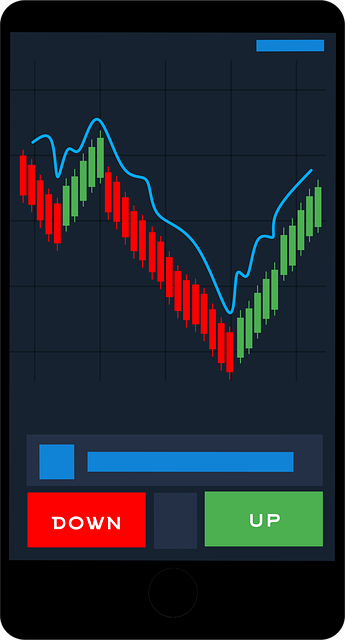Mastering the Binance Trading Application: Complete Guide
Author: Jameson Richman Expert
Published On: 2025-11-04
Prepared by Jameson Richman and our team of experts with over a decade of experience in cryptocurrency and digital asset analysis. Learn more about us.
The binance trading application is one of the most powerful tools for retail and professional crypto traders, offering spot, margin, futures, advanced charting and mobile convenience. This article walks you through installing and securing the app, understanding core features, executing strategies with examples, integrating indicators and APIs, and comparing alternatives so you can trade smarter and safer.

Why the Binance trading application matters
Binance’s app combines a wide range of trading instruments with deep liquidity, responsive charts and frequent product updates. Whether you are executing a quick market order on mobile or running advanced futures strategies on desktop, the app aims to deliver speed, functionality and access to hundreds of token markets. Learning the app fully helps reduce errors, control fees, and improve trade execution — all crucial for consistent results.
Quick overview: what’s inside the app
- Spot markets (instant buy/sell)
- Margin trading (cross/isolated)
- Futures (USDT-margined, COIN-margined)
- P2P trading and fiat on-ramps
- Advanced charting with multiple indicators
- Orders: market, limit, stop-limit, OCO, trailing stop
- Staking, Savings and Earn products
- API access for automated strategies
Getting started: download, register and secure your account
To begin, download the official Binance app from your device’s app store or visit the web platform. If you don’t have an account, register with an affiliate link to support this guide: Create a Binance account.
Step-by-step registration
- Sign up with an email or phone number and verify your contact.
- Complete basic KYC by uploading ID and selfie (required for higher limits).
- Enable Two-Factor Authentication (2FA) – Google Authenticator recommended.
- Set up anti-phishing code and withdrawal whitelist for extra security.
Security tips: Use a unique, strong password. Avoid reusing passwords across services. Consider a hardware wallet for large holdings and always check domain names and app publisher info before entering credentials.

Navigating the interface: mobile and desktop differences
The Binance trading application adapts to mobile screens but keeps most desktop functionality. Mobile is optimized for quick trades, alerts and portfolio checks, while desktop offers wider charts and multi-window layouts for detailed technical analysis.
- Mobile: Fast order placement, push notifications, simplified charts.
- Desktop/Web: Multi-chart layouts, advanced order types, order book depth and API keys management.
For foundational knowledge about the platform’s history and overall industry context, see the Binance entry on Wikipedia: Binance — Wikipedia.
Core trading features and how to use them
Markets and pairs
Select a trading pair (e.g., BTC/USDT) to view price charts, order book and recent trades. Use price alerts to be notified of key levels. The app also categorizes markets by stablecoins, BTC pairs and fiat.
Order types explained
- Market order: Immediate execution at current market price — best for fast fills but watch slippage.
- Limit order: Execute at a specified price or better — useful for precise entries/exits.
- Stop-limit / Stop-market: Trigger orders for risk management or breakout entries.
- OCO (One-Cancels-Other): Place take-profit and stop-loss simultaneously — great for managing trades.
- Trailing stop: A dynamic stop that follows price moves, locking in profits as price moves favorably.
Margin and futures
Margin trading allows borrowed funds to increase position size. Futures offer leveraged exposure with contracts settled in USDT or coins. Always check maintenance margin and liquidation price before opening a position.
Beginners should practice on testnet accounts or use small sizes. If you want to explore learning resources about derivatives platforms, review a beginner guide for a competitor like Bybit: How does Bybit work for beginners (2025 guide), and consider safety information such as trustworthiness before committing funds: Is Bybit legit? Complete trust guide.
Charts, indicators and signals
The Binance trading application integrates charting with popular indicators (SMA, EMA, RSI, MACD, Bollinger Bands) and supports third-party tools for more advanced analysis. To learn how to apply indicators and signals to price action, see this practical guide on indicators and strategies: Bitcoin price indicators, signals and strategies.
Common indicators and practical uses
- Moving Averages (SMA/EMA): Identify trend direction and dynamic support/resistance. Use EMA crossovers for entries.
- RSI (Relative Strength Index): Gauge momentum and overbought/oversold conditions; combine with price structure for divergence signals.
- MACD: Confirm momentum changes and trend shifts for swing trades.
- Bollinger Bands: Find volatility squeezes and breakout setups.
Use indicators in combination — for example, look for RSI divergence plus an EMA crossover near a key Fibonacci level to increase signal quality.

Proven trading strategies with examples
Below are practical strategies you can test in the Binance trading application. Always backtest and paper trade before deploying capital.
1. Trend-following (swing trading)
- Timeframe: 4H or Daily.
- Indicators: 50 EMA and 200 EMA for trend; MACD for momentum.
- Rules: Trade in the direction of the 50 EMA vs 200 EMA. Enter on a pullback to the 50 EMA with MACD confirming momentum. Place stop below recent swing low and target previous resistance or a 1.5–3x reward-to-risk.
2. Breakout trading
- Timeframe: 15m–1H.
- Indicators: Bollinger Bands squeeze, volume spike.
- Rules: Enter on a breakout candle above consolidation with increased volume. Use a tight stop under consolidation low; scale out as price confirms breakout.
3. Grid trading (range markets)
Grid trading automates buy-low/sell-high within a range. Binance offers third-party bots or use its API to implement a grid. Define top/bottom of range, grid steps and order size. This is effective when volatility is present but no clear trend.
4. Dollar-Cost Averaging (DCA)
For long-term accumulation, set recurring buy orders at fixed intervals. DCA reduces timing risk and is useful for volatile assets like BTC and ETH.
Position sizing and risk management
Risk management outweighs any single strategy in importance.
- Risk per trade: Many professionals risk 0.5–2% of account equity per trade.
- Leverage limits: Use minimal leverage as it amplifies both gains and losses. Understand liquidation mechanics.
- Stop-loss discipline: Set stops before entering and avoid moving them impulsively.
- Diversification: Avoid overconcentration in correlated assets.
Example: With $10,000 account and 1% risk per trade, maximum loss allowed is $100. If stop distance is $500, position size = $100 / $500 = 0.2 contracts or units (adjusted for instrument).
Automating trades: APIs, bots and backtesting
Binance provides a robust API for automated strategies and bots. You can build or use third-party bots for grid, market-making, or trend-following systems. Always follow API security best practices: use IP whitelisting, restrict withdrawal permissions, and store API keys securely (never embed keys in public code).
For those exploring other platforms or hedging execution strategies, alternative exchanges with referral registration include:
Before integrating any platform, review guides such as How does Bybit work for beginners and perform due diligence on legitimacy and trust: Is Bybit legit? trust guide.

Fees, liquidity and slippage
Understanding fees and liquidity is fundamental to preserving capital:
- Maker/taker fees: Binance uses a maker/taker model; fees vary by VIP tier and payment method.
- Funding rates (futures): Periodic payments between long and short sides — important for carry costs.
- Slippage: Use limit orders in low-liquidity pairs and avoid market orders with large sizes during thin markets.
Check Binance’s fee schedule on their official site and compare liquidity on CoinMarketCap or similar aggregators to choose appropriate pairs.
Tax, reporting and regulatory considerations
Crypto tax rules vary by jurisdiction. Keep accurate records of deposits, trades, realized gains/losses and withdrawals. Many regions require reporting of crypto income and capital gains. For tax guidance, consult official government resources or a licensed tax professional. For an overview of how technical analysis and trading concepts are defined, refer to Investopedia or Wikipedia pages on Technical analysis and risk management.
Common beginner mistakes and how to avoid them
- Overleveraging: Keep leverage low until you master margins and liquidation levels.
- Ignoring fees: Factor fees into expected returns, especially for frequent traders.
- Poor security practices: Use 2FA, strong passwords, hardware wallets for long-term storage.
- Emotional trading: Implement rules-based systems and pre-defined risk limits to avoid panic decisions.
- Not backtesting: Backtest strategies on historical data or paper trade before risking real capital.

Advanced features: lending, staking and Earn
If you have idle assets, Binance offers staking and Earn products that pay yield. These can be useful for long-term holders who want passive returns but come with lockups and counterparty risk. Always read terms carefully and diversify where possible.
Comparing Binance with other platforms
While Binance is feature-rich, alternatives may offer unique benefits (user interface, local fiat support, derivatives specific features). If you want to try different platforms, use legitimate referral links and compare trading costs, liquidity and security features. Sign-up links for several exchanges are available above for convenience:
For reviews and trust signals on platforms like Bybit, consult independent analyses and community feedback linked above.
Practical trader checklist for using the Binance trading application
- Install app from official source and verify publisher.
- Register and complete KYC with strong password and 2FA.
- Fund account via secure fiat on-ramp or deposit from trusted wallet.
- Set up alerts, watchlist and preferred chart layout.
- Backtest and paper trade your strategy on the timeframe you plan to trade.
- Use limit orders where possible and define stop-loss/take-profit levels.
- Monitor funding rates, fees, and news that affect liquidity or token fundamentals.
- Withdraw profits regularly and store long-term holdings in cold storage.

Where to learn more and continue improving
Deepen your knowledge with reputable resources:
- Educational pages on Binance Academy for on-platform guides.
- Investopedia for financial concepts and technical analysis tutorials: Investopedia.
- Community forums and verified trading journals to learn real-world trade management.
- Indicator and strategy articles like the one linked earlier on Bitcoin indicators: Bitcoin indicators and strategies.
Final thoughts
The binance trading application is a comprehensive platform suitable for beginners and advanced traders when used responsibly. Mastering its features — from order types to risk controls and API automation — can significantly improve trading outcomes. Start small, use strong security practices, and continually learn by backtesting and journaling trades. If you want to experiment across platforms, consider registering on alternative exchanges using the links above and always verify platform legitimacy and fees before trading.
Relevant starter links (register or explore):
For more in-depth guides on specific tools, indicators and platforms, see the linked articles throughout the text and continue practicing in a demo or low-risk environment before scaling up.